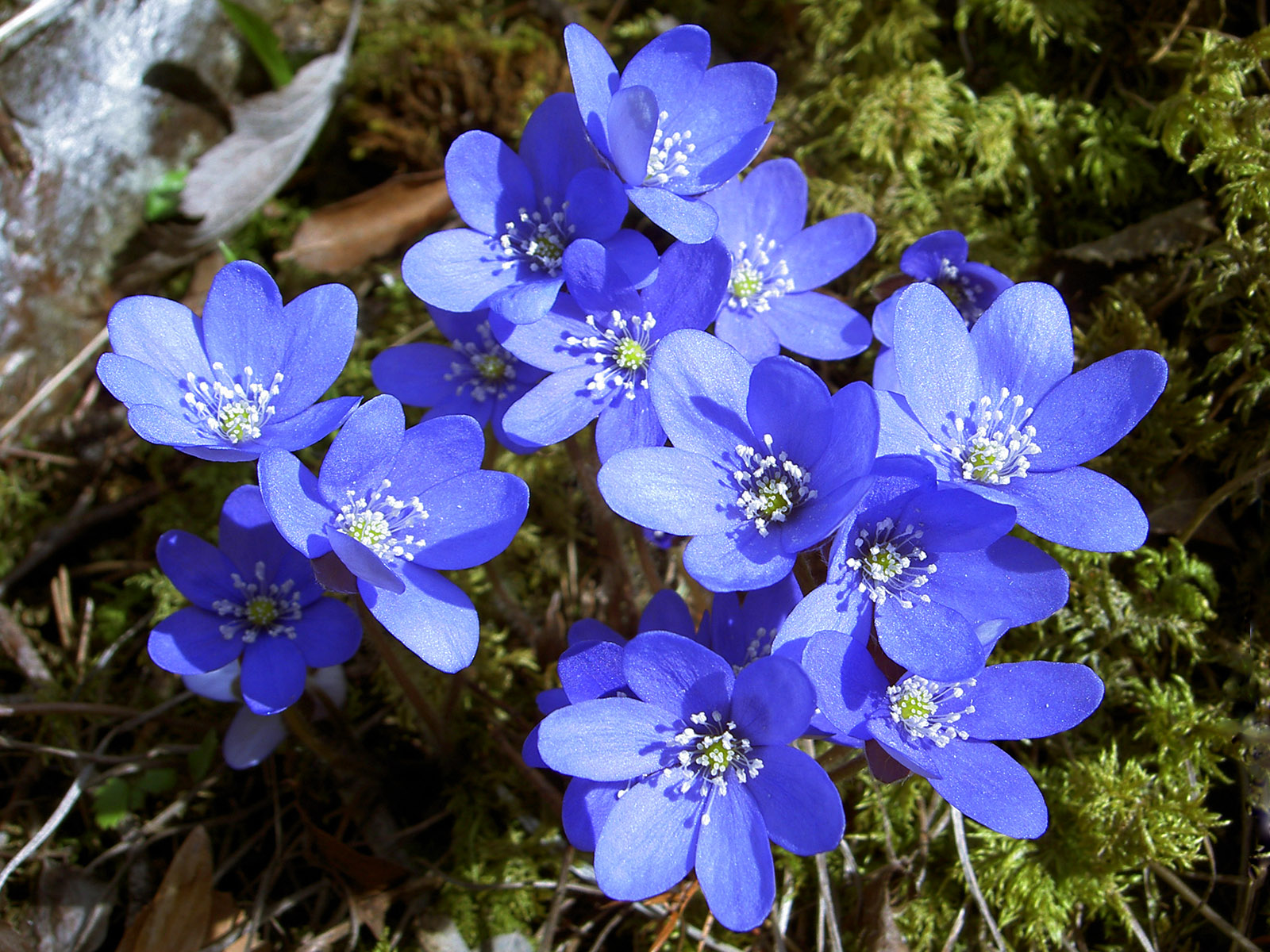
European Liverleaf (Hepatica nobilis) grows on lime containing soils, which is less common in this country. In those places it's the first wildflower to show up in spring The site is actually Hell east of Trondheim. From there on and northwards along the Trondheim Fjord to Snåsa the bedrock contains limestone.
(2004-04-03)
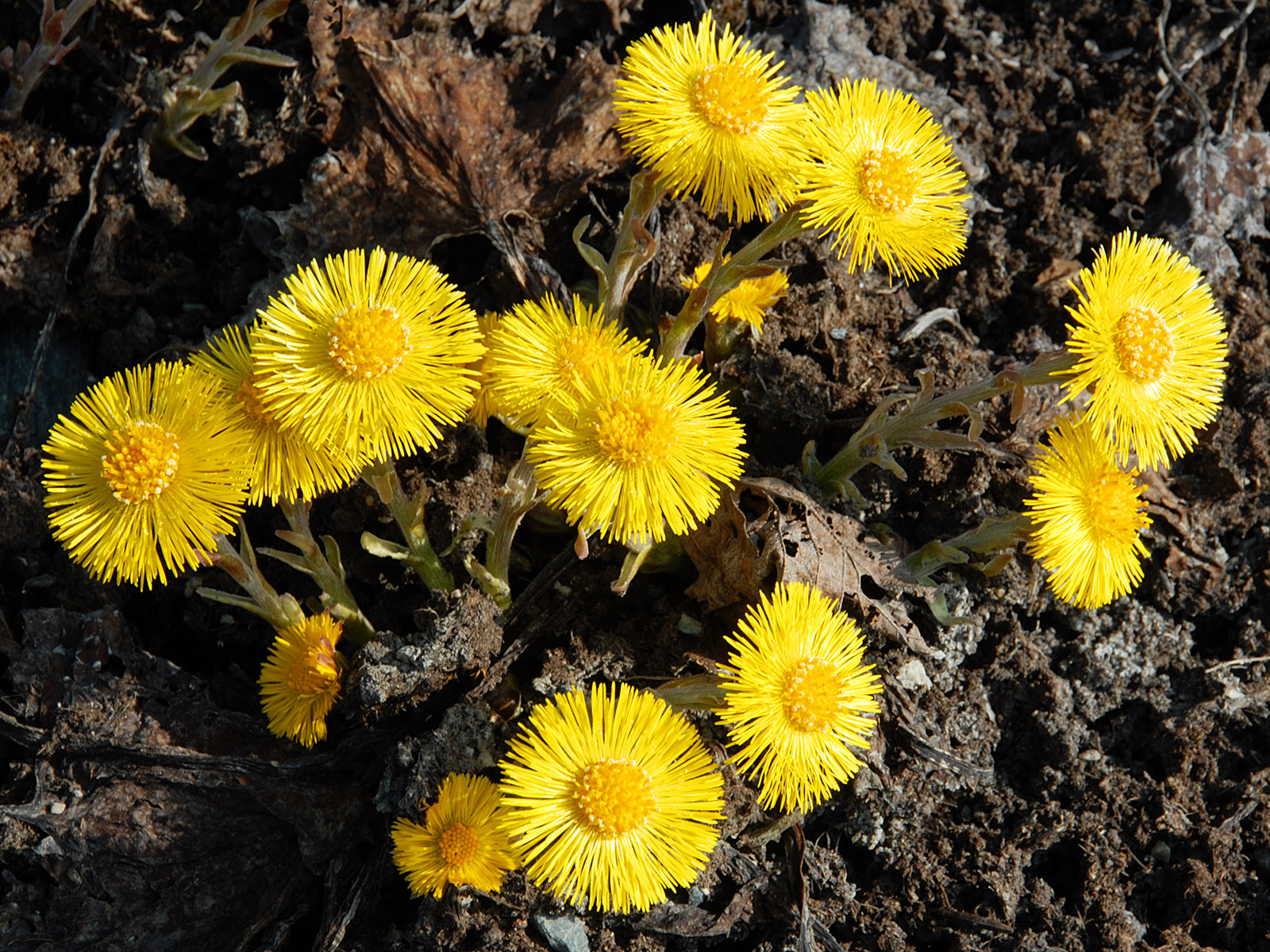
Coltsfoot (Tussilago farfara) is the first wildflower in most parts of the country. The surprisingly large leaves will grow up after the flowers have withered. The genus name Tussilago is Latin an may be interpreted as "cough-remover", and the use as medicine plants is widespread and old (but warned against today). There is only this species in the genus Tussilago: farfara.
(2008-04-25)

The European Wood Anemone, Wind Flower or Wind Crowfoot (Anemone nemorosa) is an abundant spring flower. Their sap irritates the skin and may cause a (black) rash; quite harmless though.
(2004-04-22)
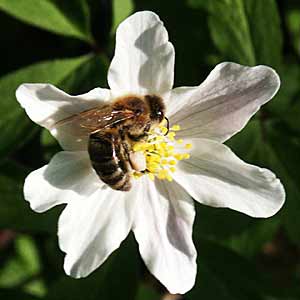
The bee is collecting white pollen.
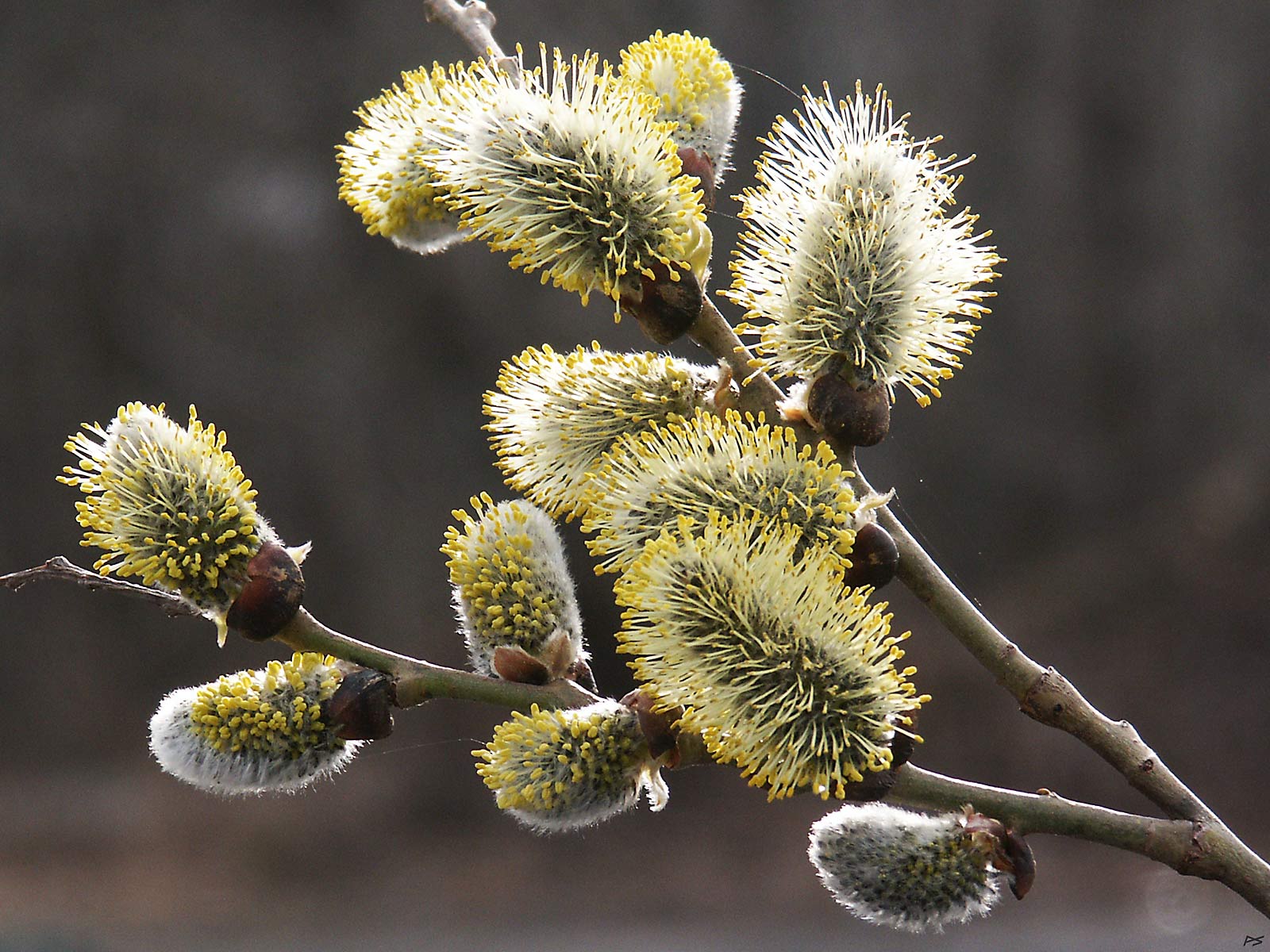
One of those willows (Salix) that flower in spring. The flowers shown are male.
(2004-04-06)
There are at least twenty five species of Salix in this country and at least as many hybrids, but the botanists never agree (they do have challenges). There are (nearly) always female and male individuals, which is evident when they flower, usually in early spring. Salix come in all sizes, the smallest one is the Least Willow (Salix herbacea), which protrudes less than an inch above the ground in the mountains. Okay, sometimes two inches – two and a half.
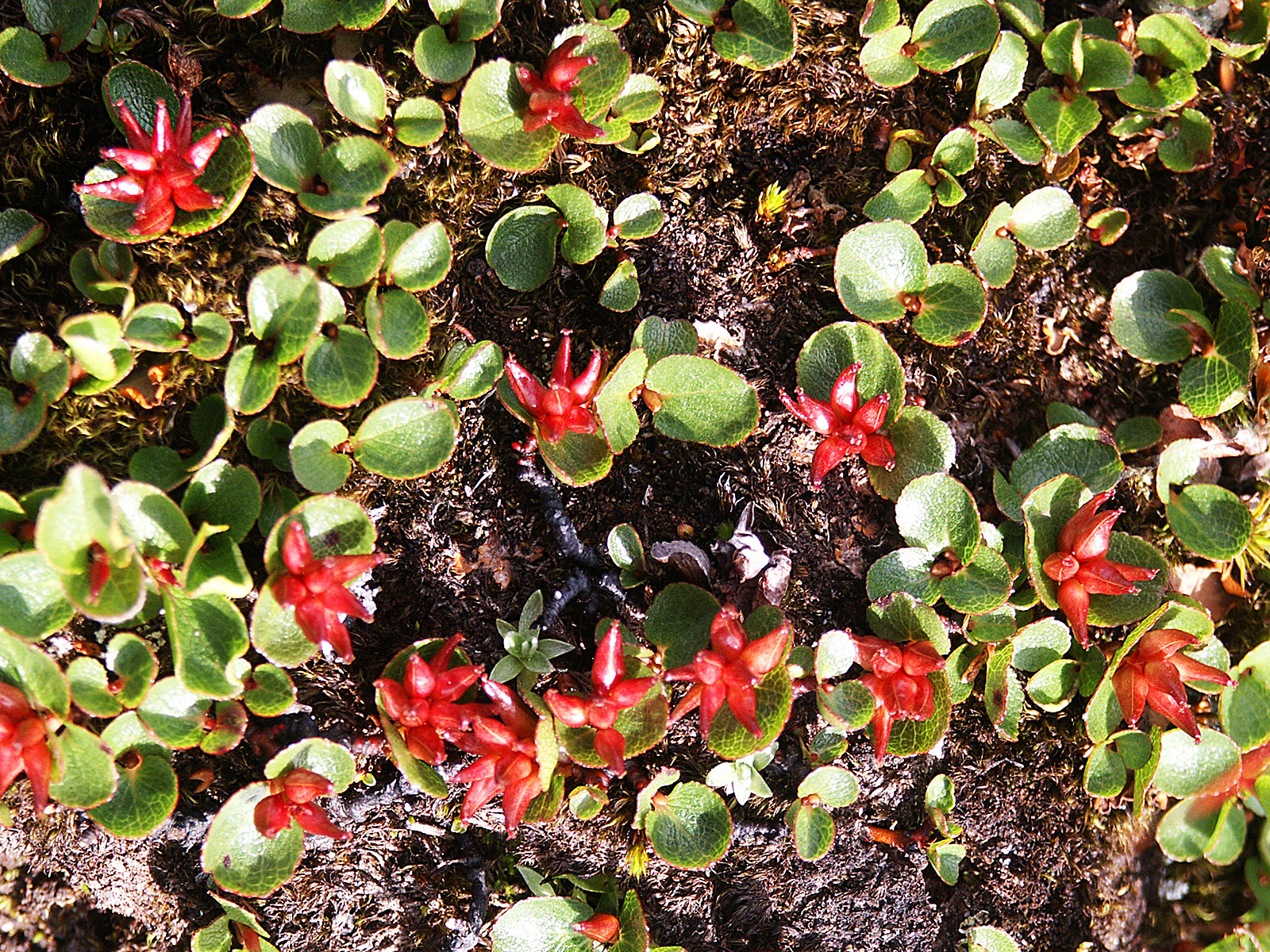
Sorry, those are not flowers, but the red fruits of Salix herbacea, the Least/ Dwarf/ Snowbed Willow, because I happened to mention the dwarf shrub above. I should also mention that on its small leaves we often find quite big green or lustrously red galls each containing the larva of a sawfly.
(2005-08-10)
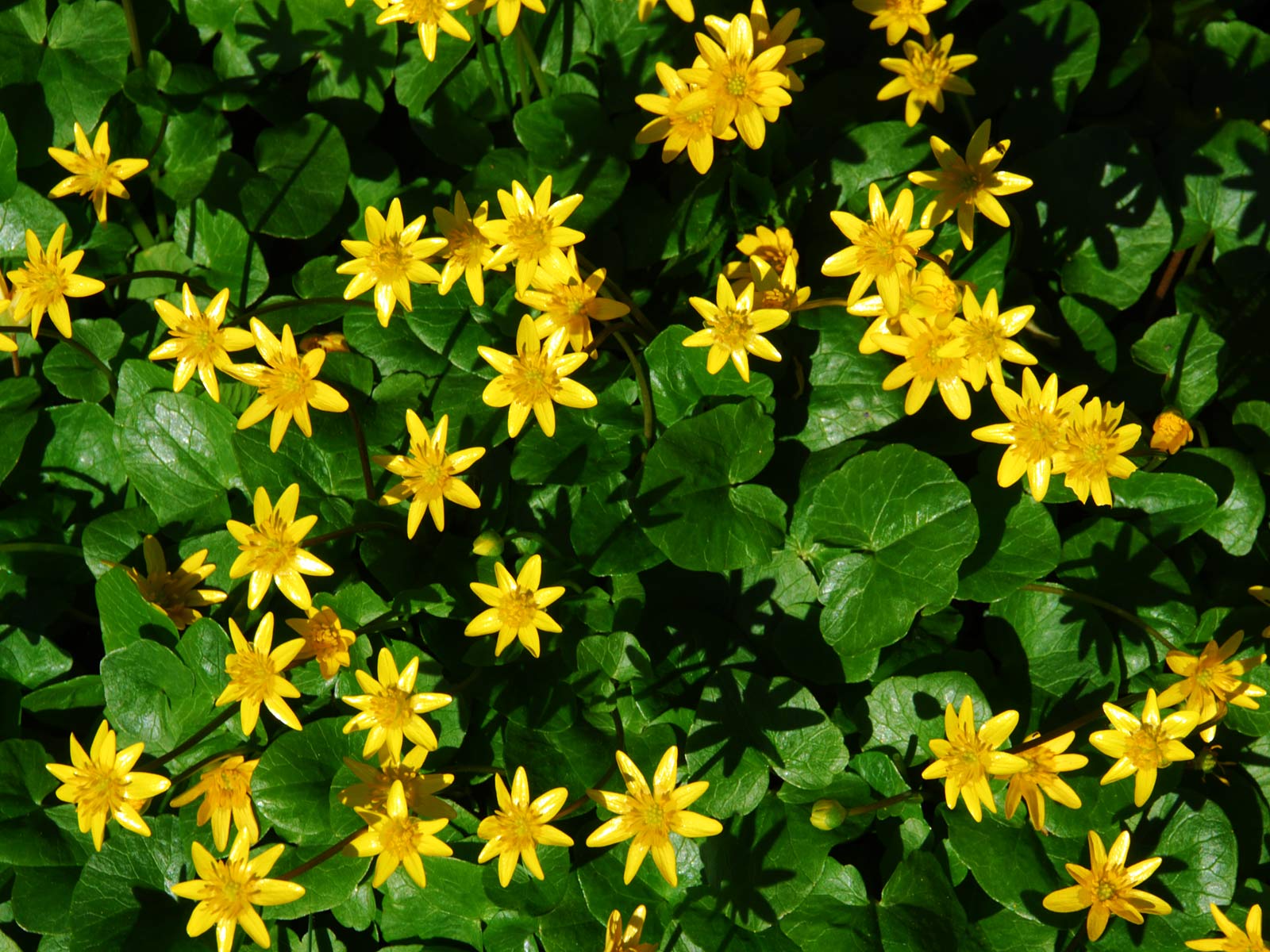
Lesser celandine – fig buttercup – pilewort (Ranunculus ficaria) is another spring flower. The white spots on the petals are caused by a quite common phenomenon: Infrared (or ultraviolet) light is strongly reflected because that attracts bees and other insects. We don't see it, but unfortunately cameras tend to do.
(2012-05-26)

Marsh-marigold or kingcup (Caltha palustris) is found in wet places, including ponds and brooks, and flowers in spring.
(2004-05-08)

Another early flower, The Yellow Star of Bethlehem (Gagea lutea) – and a bee
(2004-04-19)

Bird Cherry (Prunus padus) is abundant here. Around the middle of May these trees are covered with white fragrant flowers. We enjoy the sight, and we enjoy the fragrance – until we get too close.
(2004-05-07)
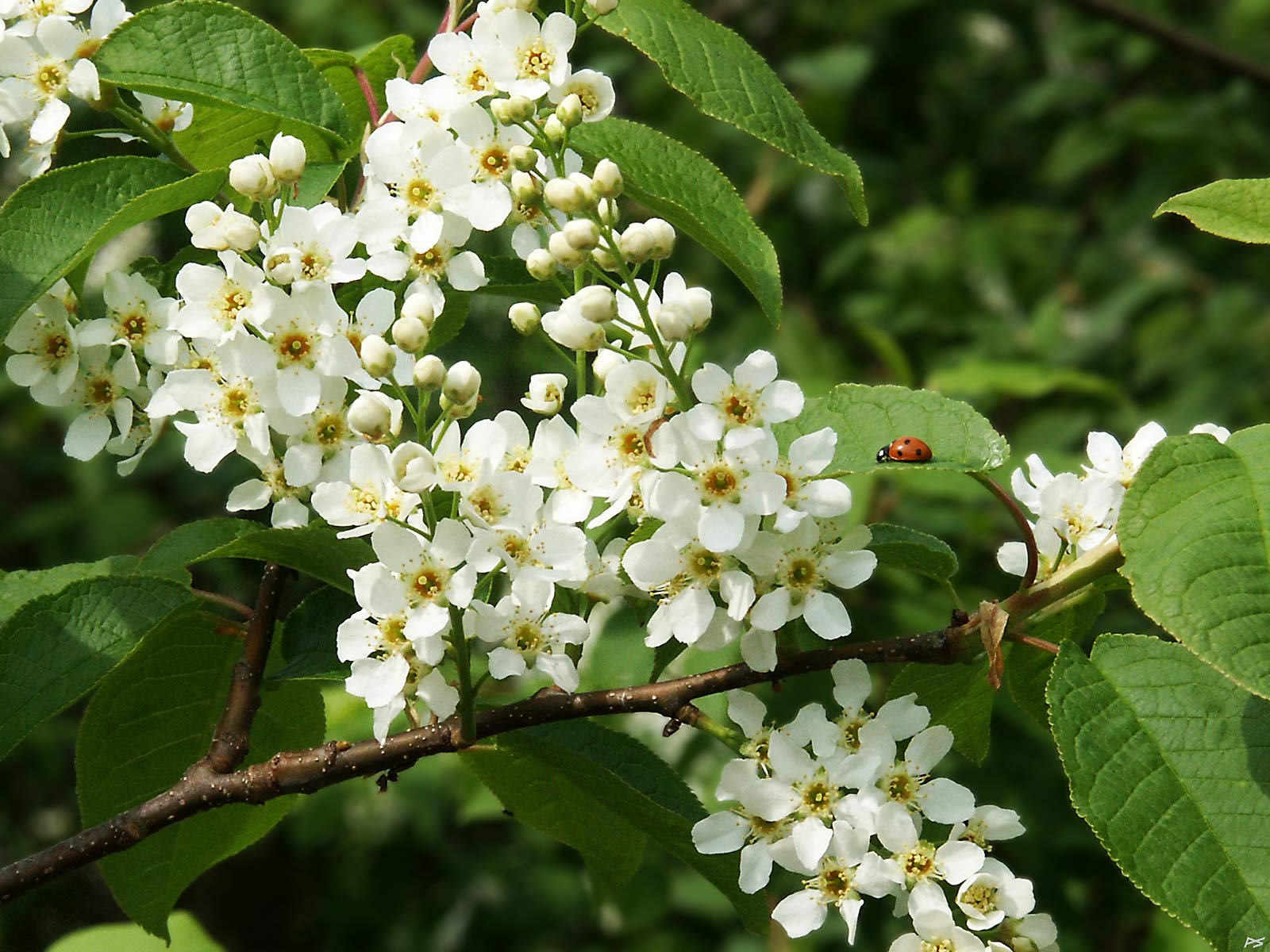
Closeup of bird cherry flowers – with a ladybug
(2004-05-07)

To farmers and garden owners the dandelion is a curse, but its beauty in the fresh green of spring cannot be denied. This plant is quite "new" in Norway; it has been widespread for only a century.
(2007-05-26)
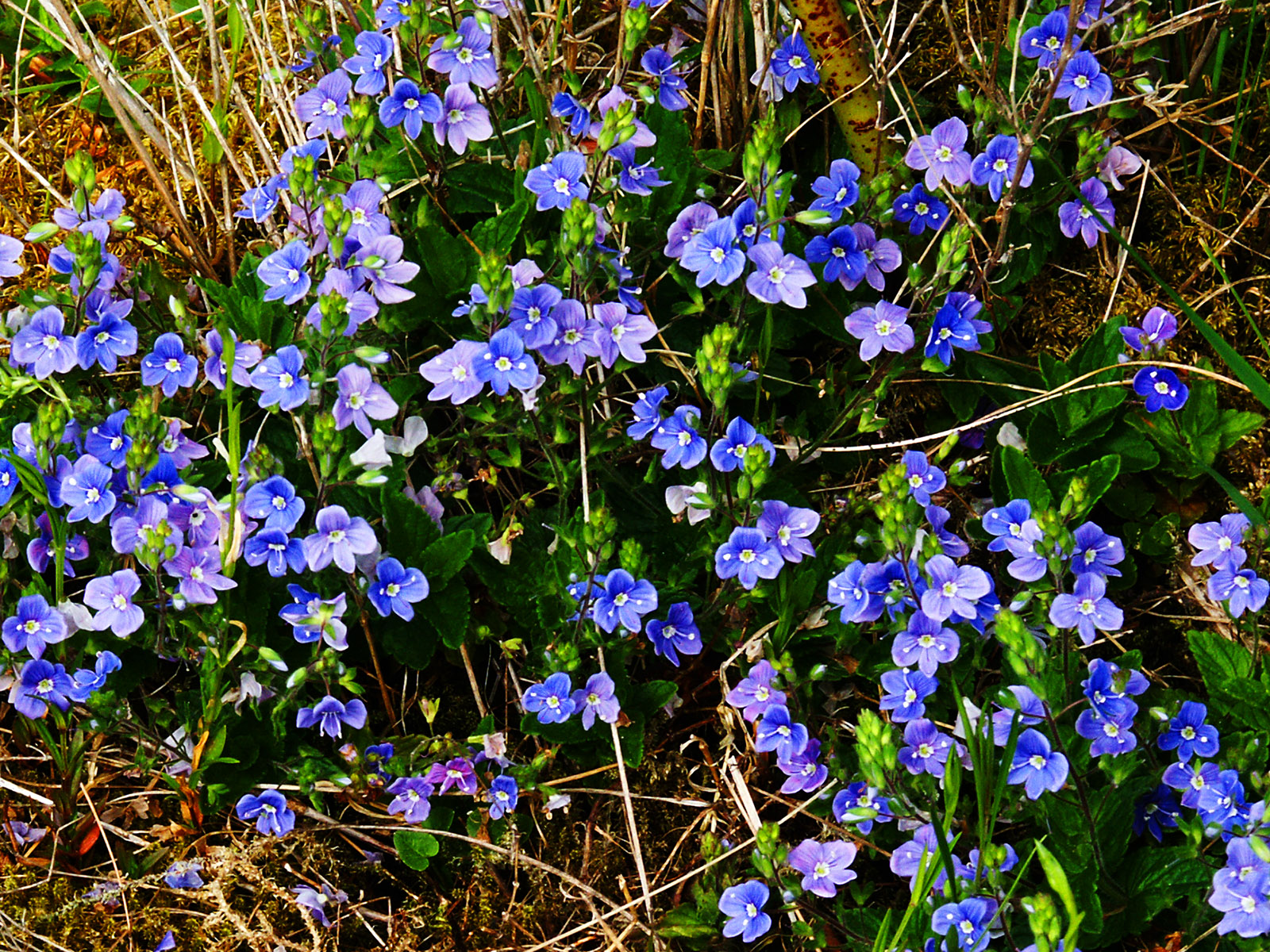
Veronica. There are many species and I don't know which. I just enjoy the beautiful blue colour.
(2003-06-08)

The white clover (Trifolium repens) has a fantastic fragrance, but sometimes you must go down on your knees to enjoy it. Or – on a warm day – lay down on the lawn and create a memory to keep for the long winter.
(2008-06-22)
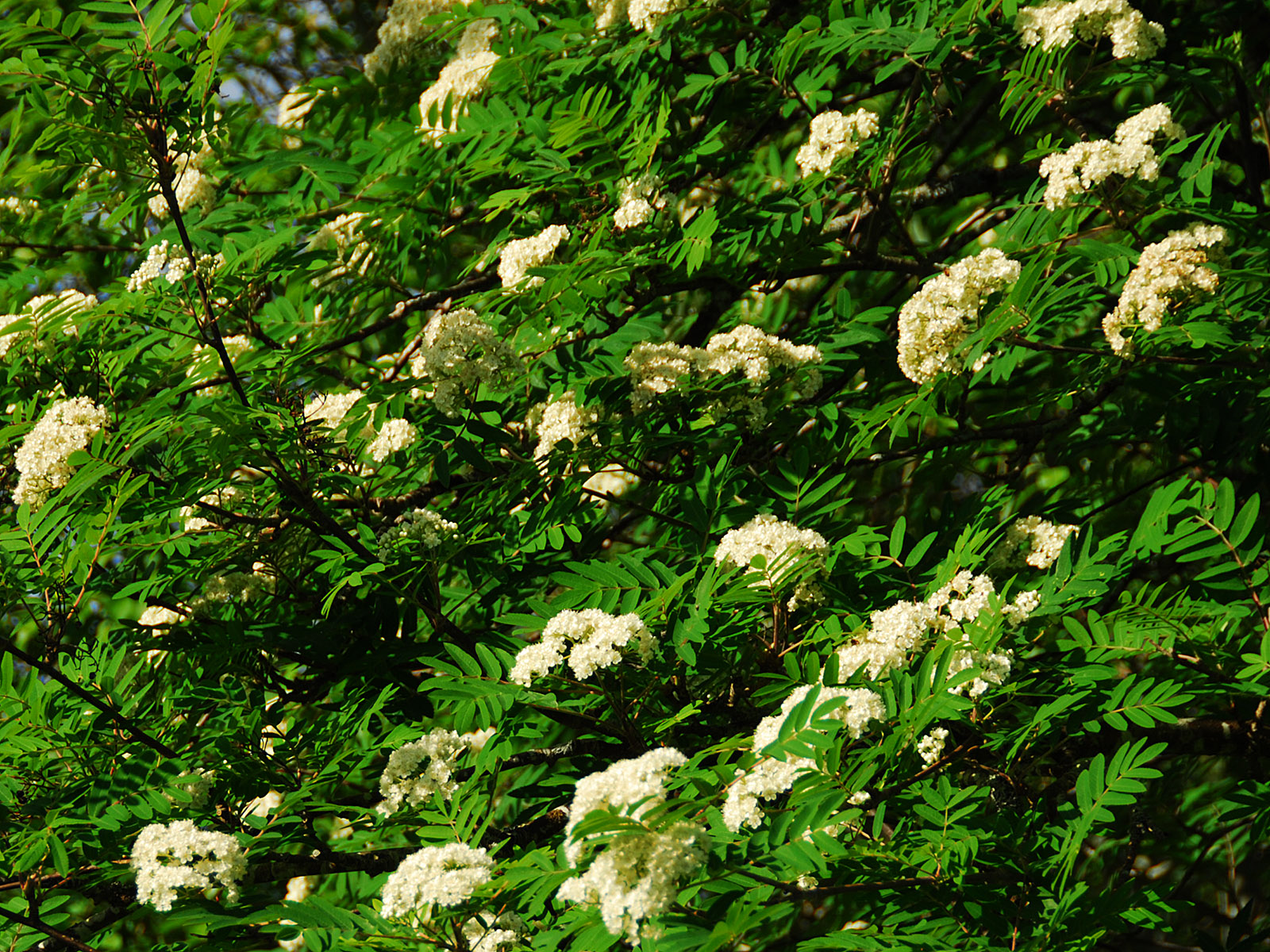
The rowan (Sorbus aucuparia) may flower abundantly. Unfortunately the smell is somewhat unpleasant; I get the impression that it's a mixture of the fragrance that attracts bees etc, and the smell of something you wouldn't touch, which attracts some other insects.
(2013-06-05)
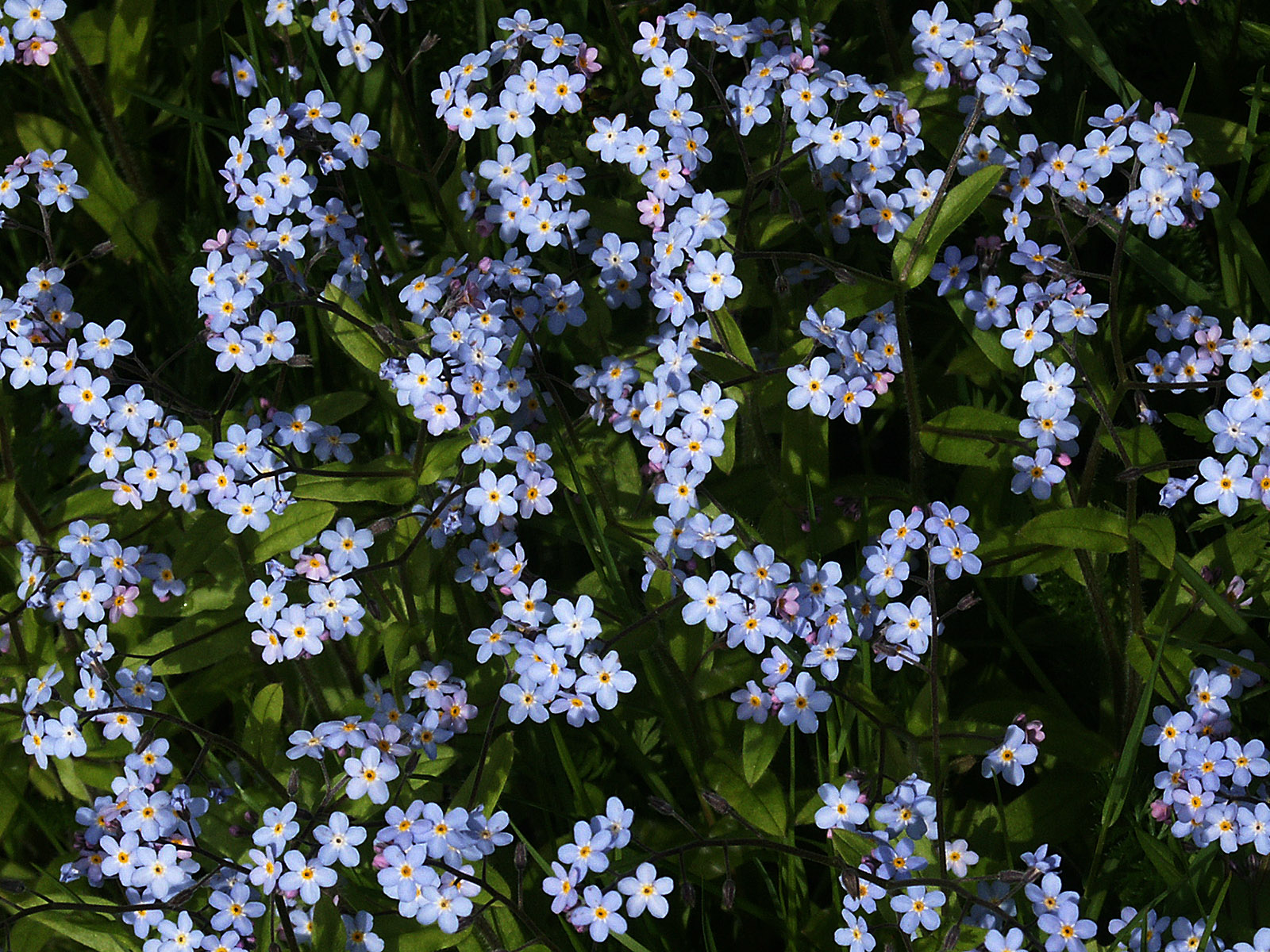
Myosotis (Myosotis), most often called "Forget-me-not", actually a translation of German "Vergissmeinnicht" more than six hundred years ago. There are many similar species and cultivars. And there are several songs of course, for who wants to be forgotten?
(2007-05-26)

Bird's Foot Trefoil (Lotus corniculatus) has many names, as is common for beautiful and useless flowers. They appear mostly early in summer.
(2008-06-22)

This used to be a grain field, but the town needed more dwellings. For an unknown reason the building project was halted for some time, and Mother Nature decided to take over. False mayweed and red clover – well done, really.
(2020-07-23)
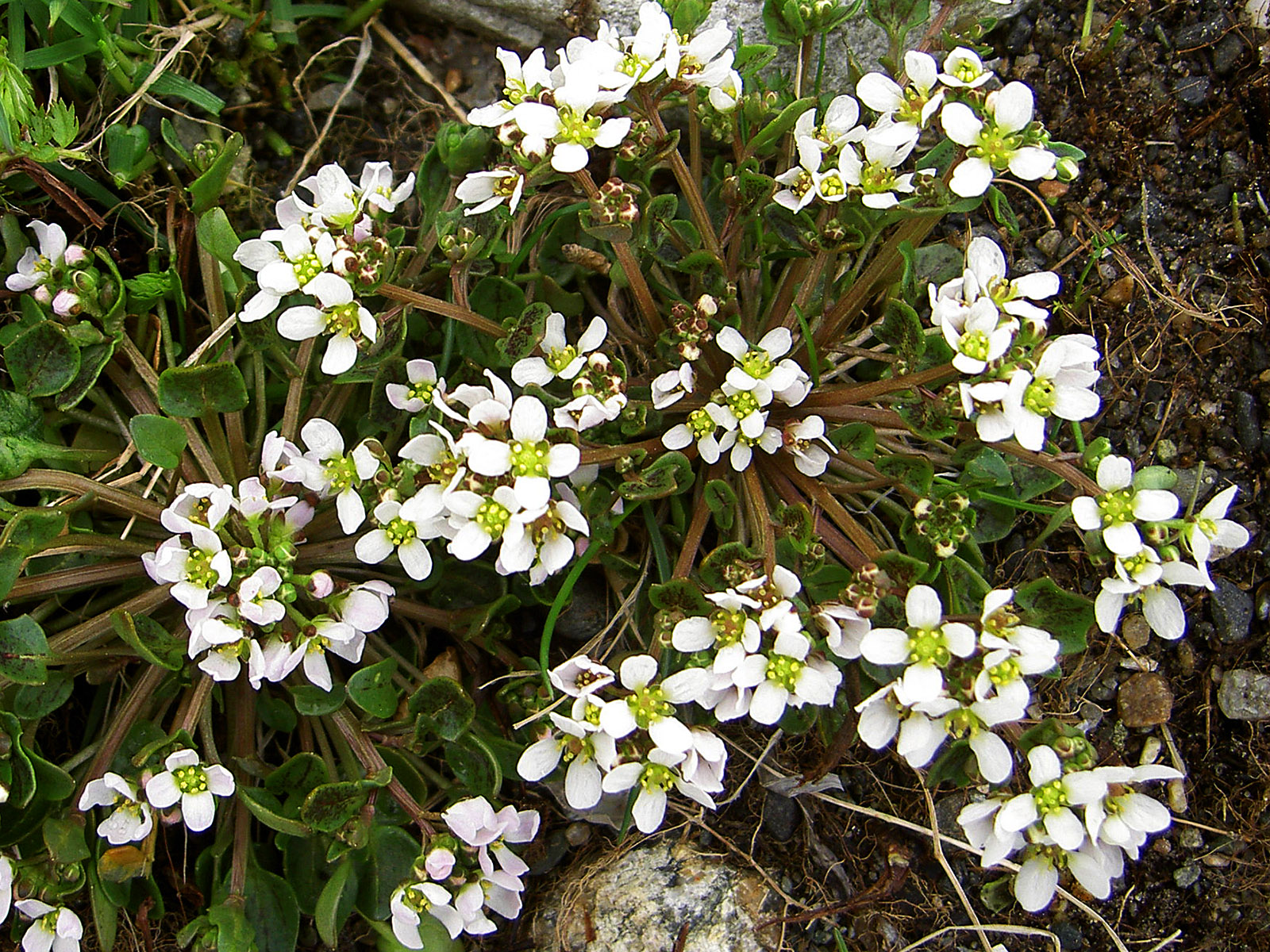
Scurvygrass (Cochlearia officinalis) may not have the most beautiful flowers, but it contains a lot of ascorbic acid, also called vitamin C, and was once eaten by sailors to save them from scurvy. Now we have better tasting sources of the same. This plant thrive even when regularly engulfed in seawater.
(2005-05-08)
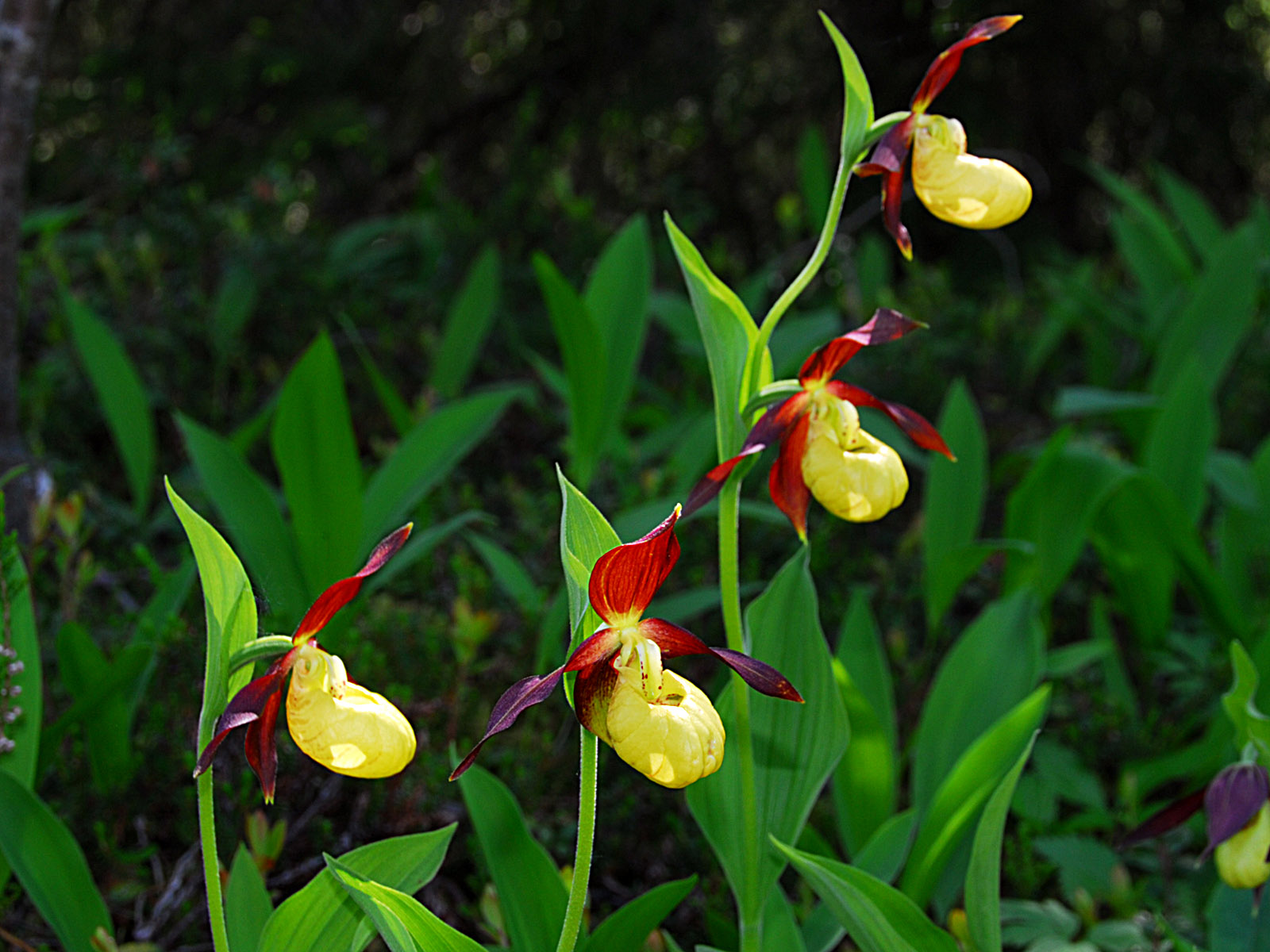
The lady's slipper orchid (Cypripedium calceolus). As the Latin name implies, it grows on calcareous soils, which in this country is less common. The red colour appears only when the light is shining through the petals from the opposite side. The picture is taken in Snåsa, Trøndelag.
(2012-06-23)

A stylized picture of the plant is the coat of arms of the Snåsa municipality.
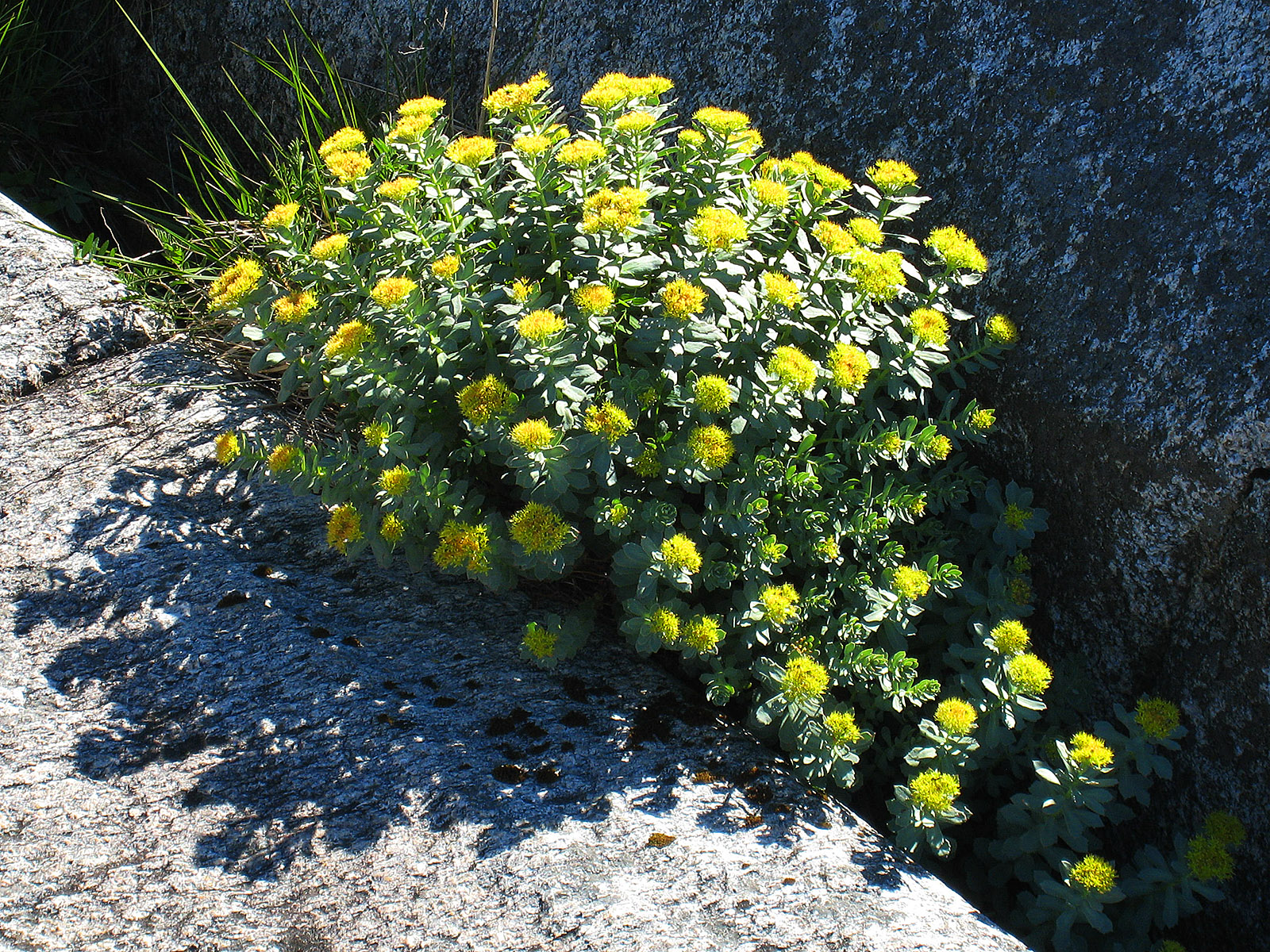
Roseroot (etc.) Rhodiola rosea, earlier Sedum roseum, got its (Latin) name from the rose-smelling and slightly rose-coloured core of its root. This one is loner and a tough one; it thrives best where other plants don't grow. Like in the mountains and, as in this case, on a sea cliff. Earlier roseroot was planted on turf roofs to protect the house from lightening and fire. Further south in Europe houseleek (Sempervivum tektorum) was used for the same purpose, but in this country houseleek is found in the wild only in the most southern part.
(2007-06-03)
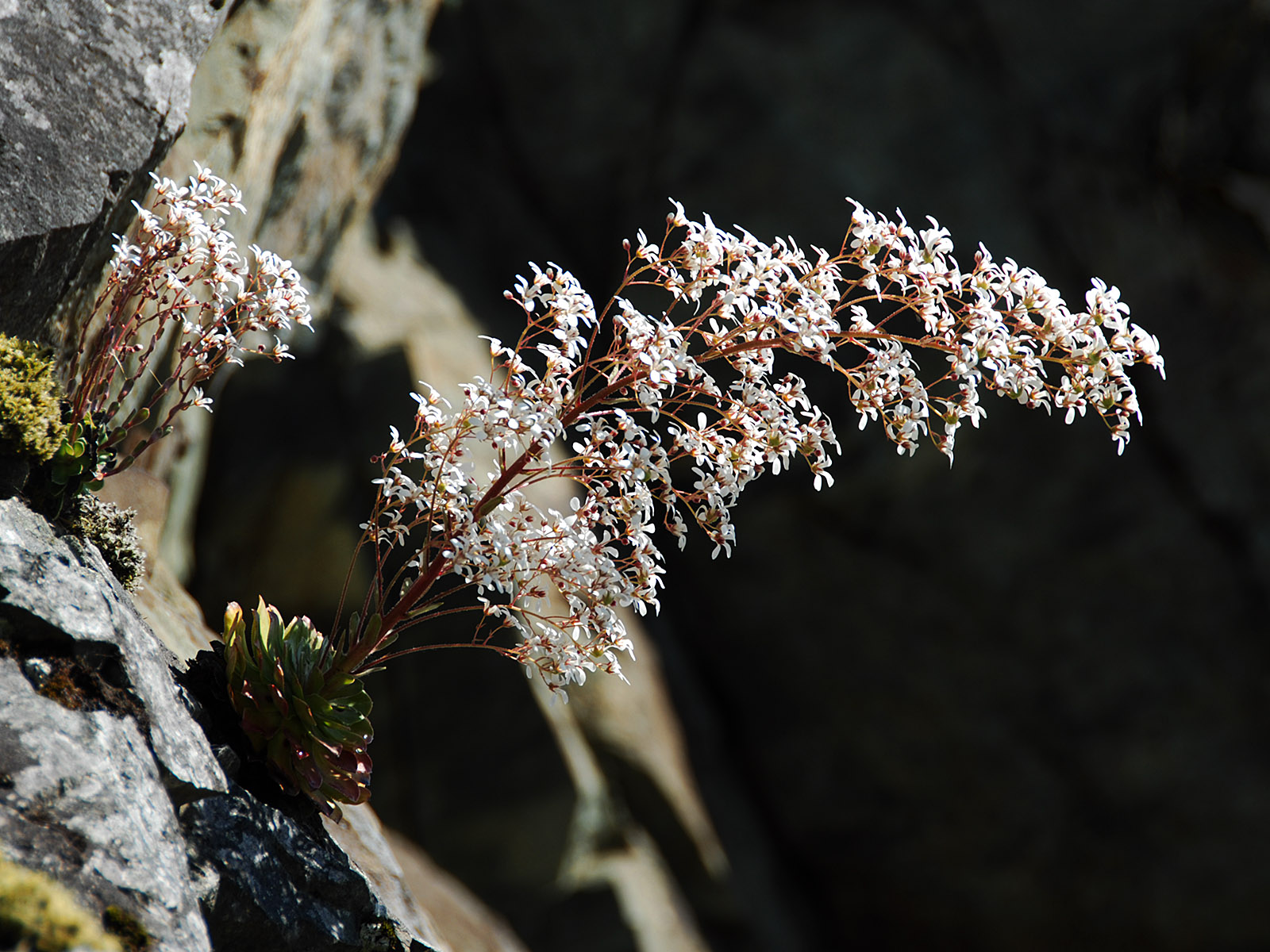
Pyramidal saxifrage (Saxifraga cotyledon) was elected Norway's national flower in 1935.
(2008-06-29)
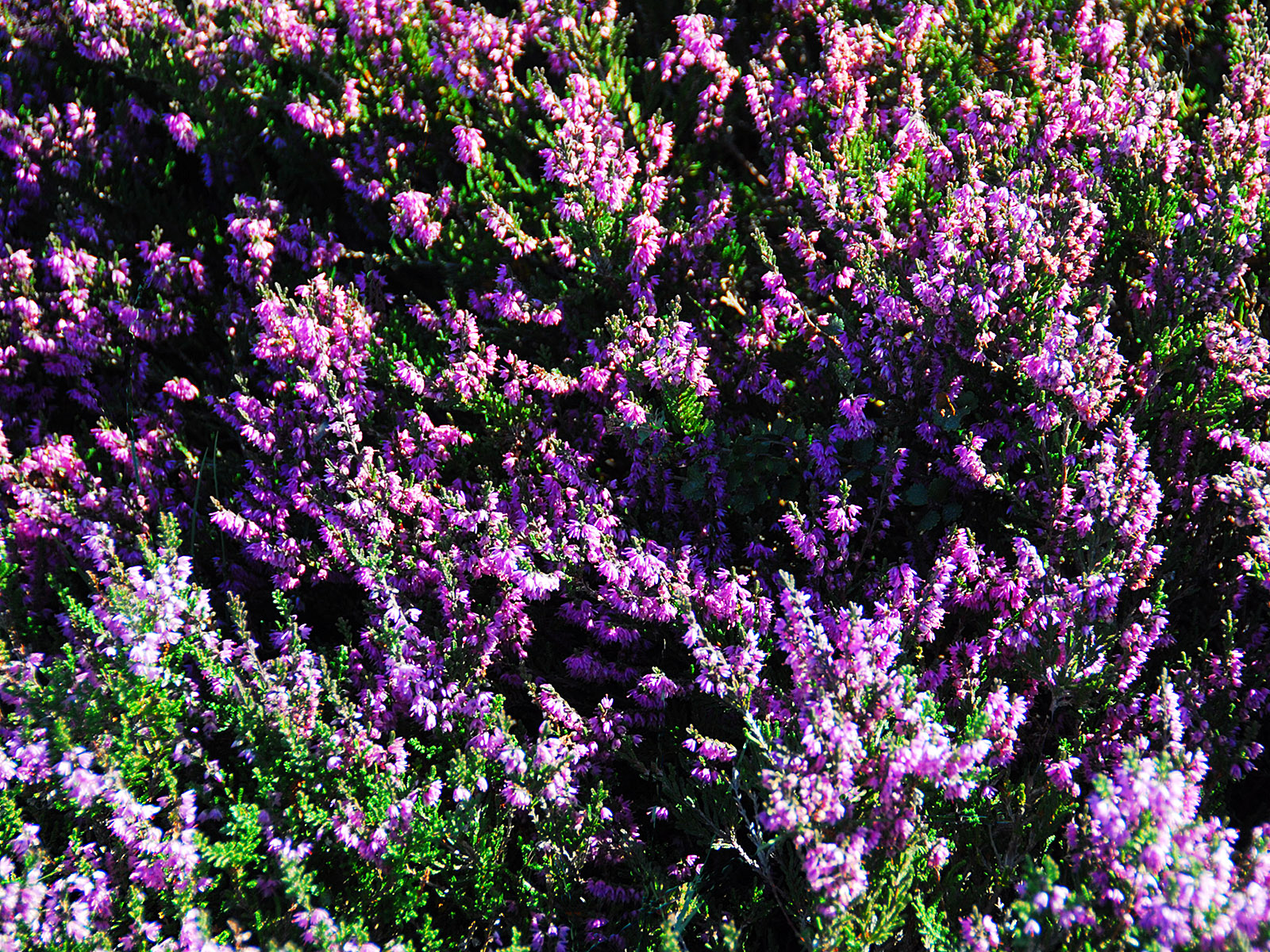
Heather, ling, common heather (Caluna vulgaris) has a pleasant smell. It was elected Norway's national flower in 1976, so there are two of them.
(2010-08-19)
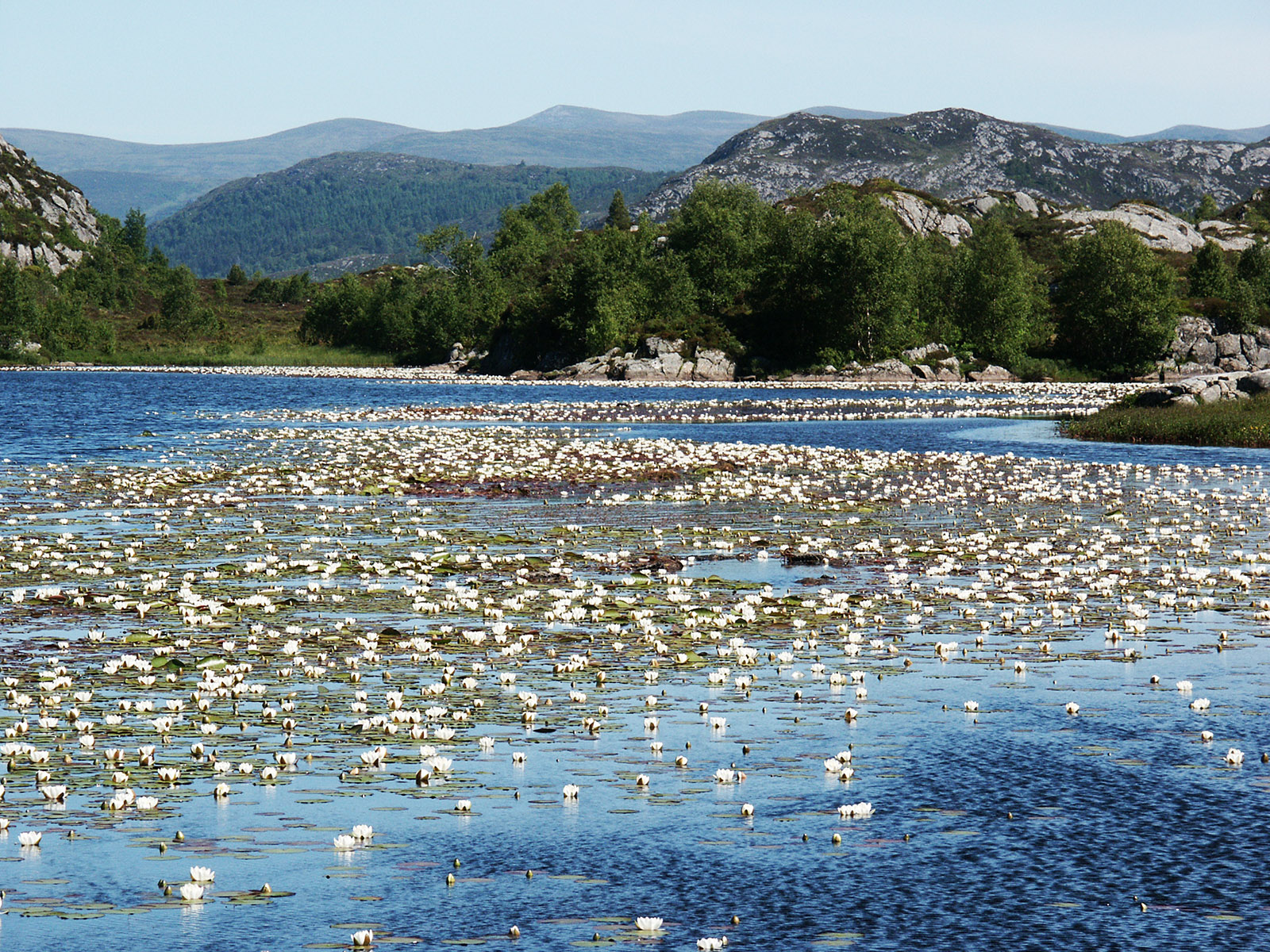
The white water lily (Nymphaea alba) is often abundant in shallow lakes. They are hated by anglers and admired by everybody else. It might not be advisable to swim among those flowers.
(2007-06-20)
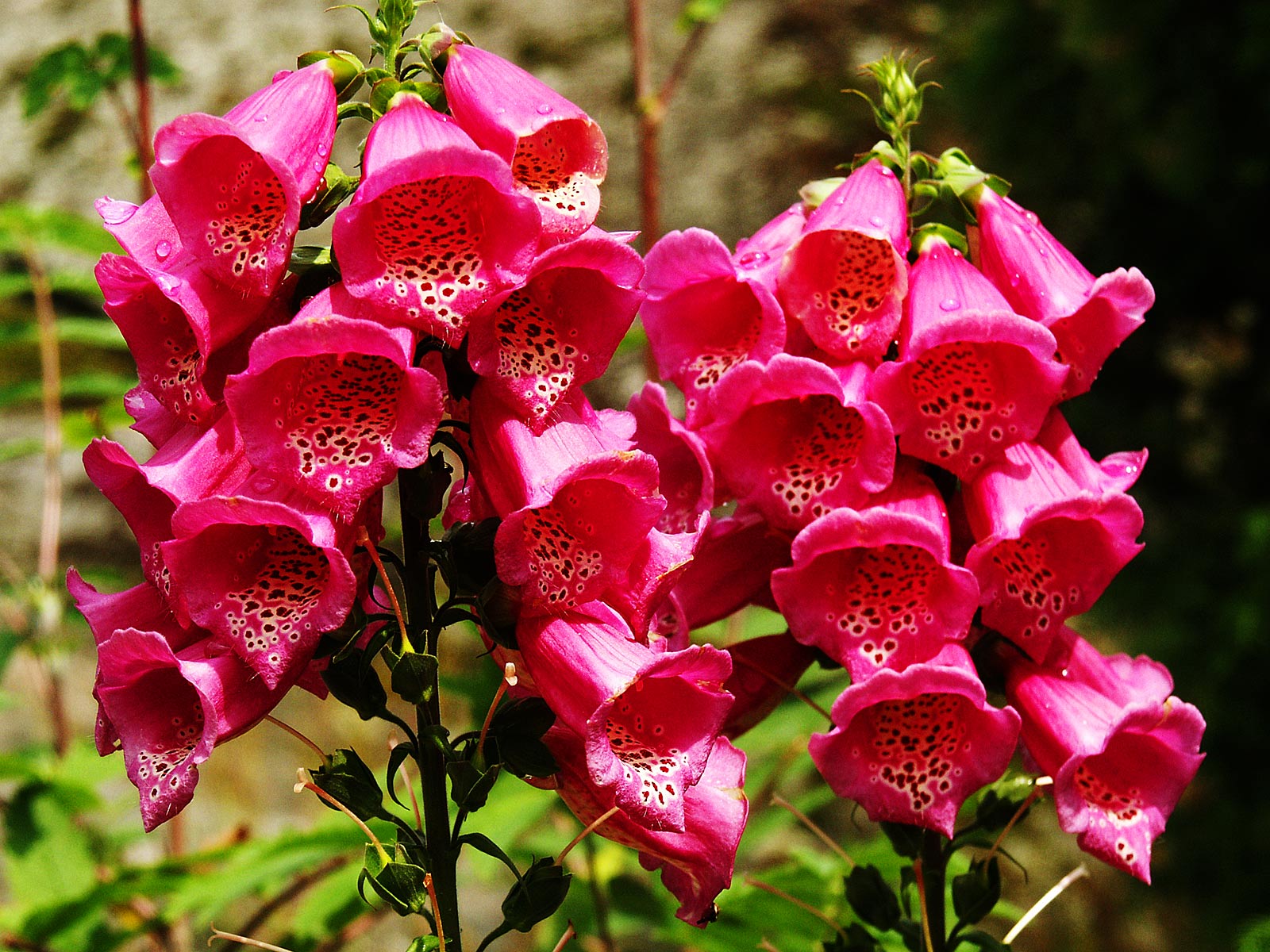
Foxgloves (Digitalis purpurea). The name Digitalis is derived from Latin digitus meaning finger. The association with the plant comes from the German name meaning thimble, in that language Fingerhut i.e. finger hat. Did you say computer? Most of us have ten fingers – which is nice for counting and computing. The plant is poisonous and extracts of it have been used as a heart medicine, and still is to a lesser extent.
(2005-07-06)
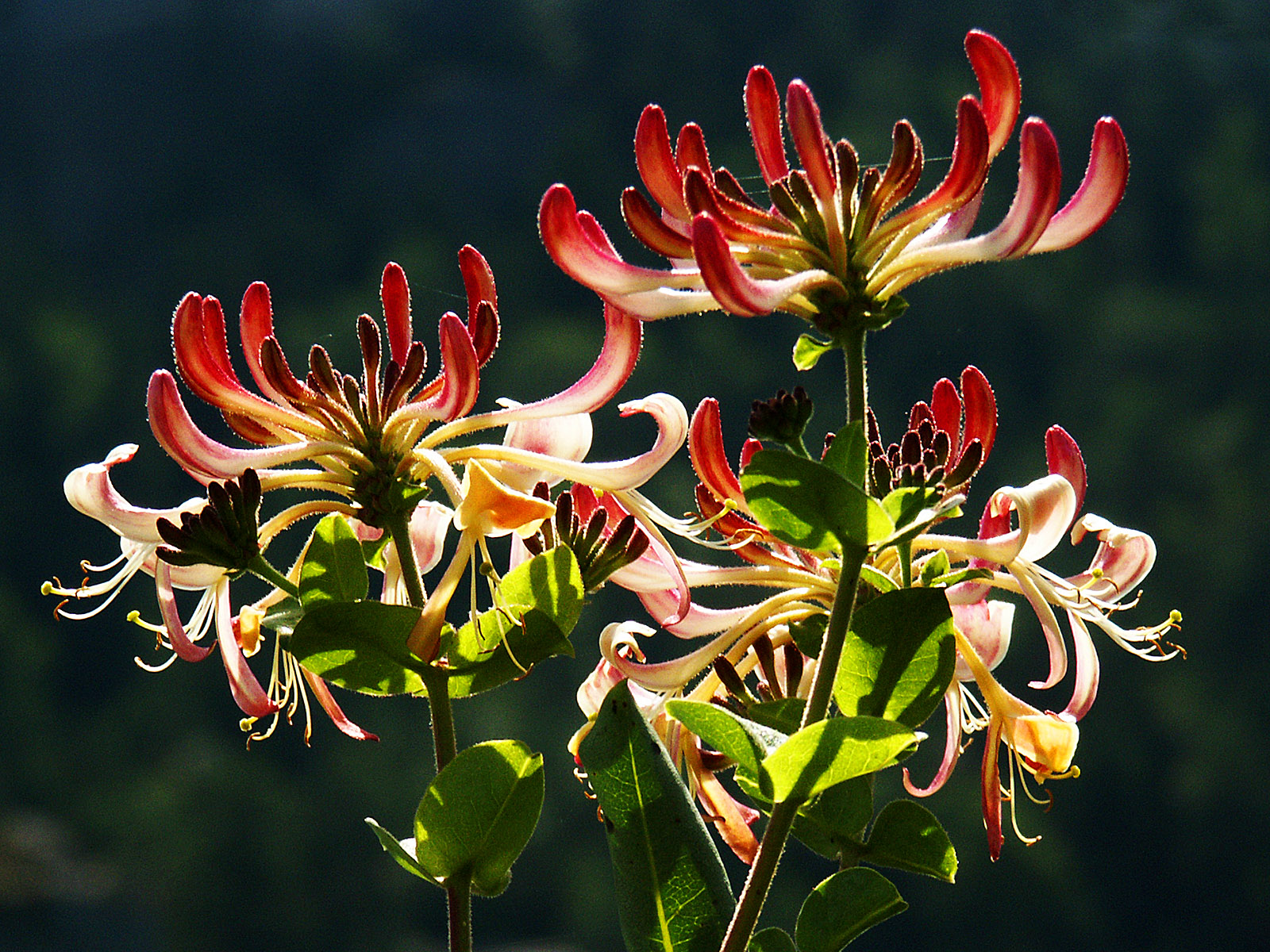
Woodbine, Honeysuckle (Lonicera periclymenum) grows in the woods near the coast of the southern part of Norway, climbing trees and shrubs and whatever stands still. During the dark hours the flowers have a pleasant odour, attracting insects that fly at night, like the Elephant hawk-moth (Deilephila elpenor), the one with the beautiful streamlined body and the tasteless pink and green colour combination.
(2003-08-08)

This moss grew in a road ditch. I don't know much about mosses, but I would guess that this is Urn hircap (Pogonatum urnigerum). And what you see is not flowers.
(2004-05-29)
